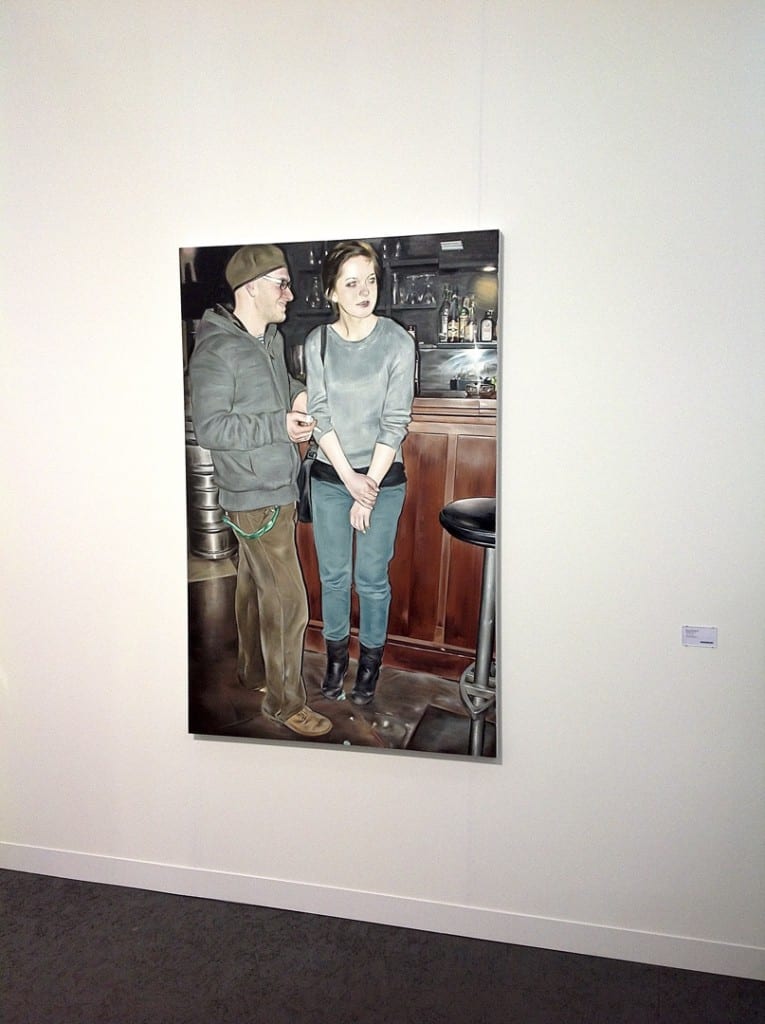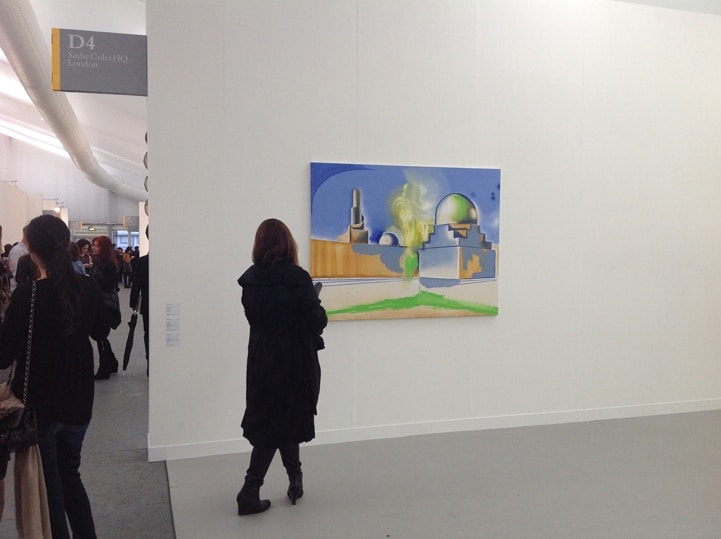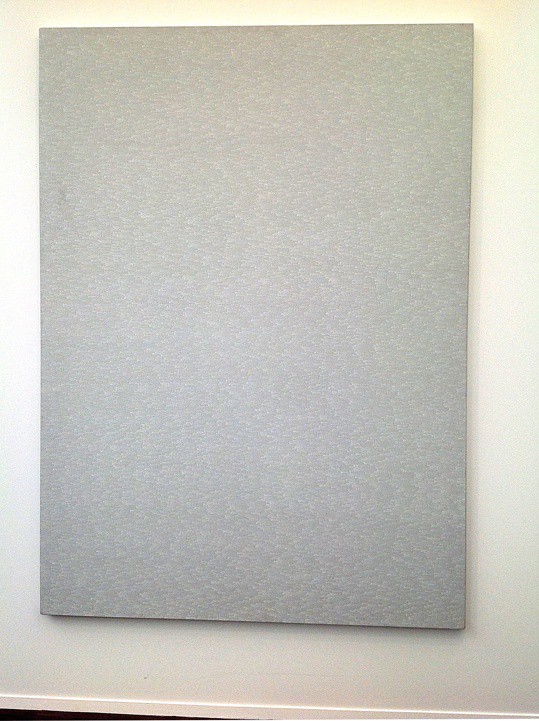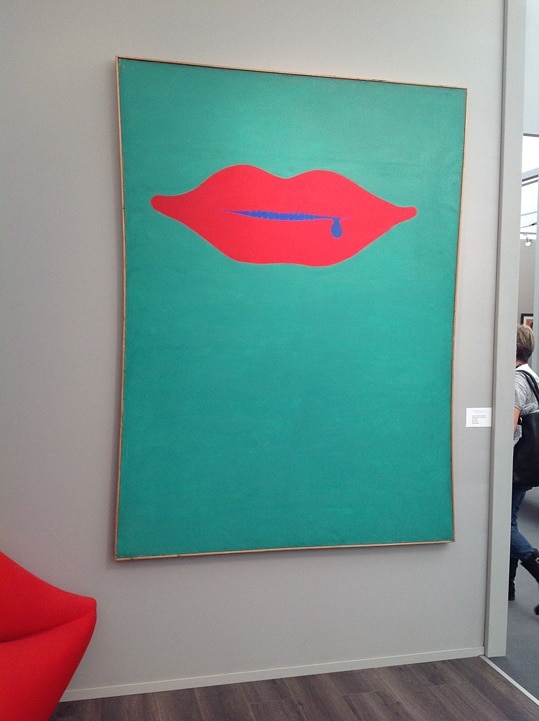The extensive gardens. The green lawns, the trees. The people are walking through these small islands, which are oases of tranquillity in this crowded, bustling and busy city. In the heart of one of them – in Regent’s Park – two large white tents surrounded by flowers and trees were situated. In mid-October one of the most dynamic and prestigious events in the world: Frieze London and Frieze Masters began in this place.

Frieze Art Fair 2013, Regent’s Park, London,
Photo by Linda Nylind, All rights reserved by Frieze London
We try to give you the full reports in Contemporary Lynx website on most of the major art fairs, so this event could not miss in our calendar. Already at first glance it was possible to see at Frieze the momentum and bigger than in other fairs desire to create an elite event available only for the selected. This was particularly evident if we compare this event with Viennafair, which had been opened only a week before Frieze. Viennafair had much more open formula. On one side it tried to attract collectors, heads of institutions and museums, but on the other side it wanted to improve the access, educate the audience from the outside, which did not visit to the fair from a purely commercial reason – the fair was for these visitors rather an investment in the future. The Frieze definitely didn’t concentrate on the educational and cognitive aspects. It was purely commercial event. And because both Frieze London and Frieze Masters were offering for sale the works of top class artists (at least this was the assumption), they respectively built the atmosphere and character of the fairs. In comparison with all the other events of this kind in the world, both Frieze fairs were exhibiting a relatively small number of galleries. The stands were usually very large and to relieve the “crowds” and ensure a comfortable stay to the customers, a hall tent was spacious and light – in such conditions everything was easy accessible and one couldn’t complain that it was too crowded and stuffy. In addition the organizers had effectively limited the access for those who didn’t have £ 32 in their pocket (and £ 50 for both parts of the fair) for the ticket. It was not possible to enter and just enjoy the art being gathered there. In such easy way the organizers weeded out the visitors not really involved in the art business.
As we have already mentioned, there were very few exhibitors in comparison to the other fairs. Among them there were two galleries from Poland participating at Frieze London: Foundation Gallery Foksal and Raster Gallery. Both galleries looked well in comparison with the others. There were no revolts and. Raster Gallery having much smaller booth than a second Warsaw gallery was focused on showing the works of one artist – Aneta Grzeszykowska.
This presentation drew attention of many people and was counted among the leading exhibitors marked out for the best and for these which “have to be seen”.
Foksal Gallery Foundation, as opposed to Raster, exhibited a collective presentation of four artists: Wilhelm Sasnal, Piotr Janas, Pawel Althamer and Monika Sosnowska.

Monika Sosnowska, Wilhelm Sasnal, Paweł Althamer, Piotr Janas, Foksal Gallery Foundation, Stand E4, photo Contemporary Lynx
Although the list of Polish galleries ended with these two representatives, the Polish artists were also shown at the stands of the foreign galleries. However there were also absolutely no surprises. The galleries showed the artists who had worked with them for years, who had more than one solo exhibition in their premises. These were also chart-topping names, that were easily recognizable by an international audience. Marcin Maciejowski’s images were exhibited at the stands of Galerie Thaddaeus Ropac and Wilkinson Gallery from London placed in the Frieze London tent. A painting of Wilhelm Sasnal was presented by Sadie Coles HQ, Marzena Nowak at Galerija Gregor Podnar booth and Paulina Ołowska by Studio Voltaier, who organized also her exhibition in springtime. The minimalist work made by Alice Kwade was presented at the Johann König Gallery booth.

Marcin Maciejowski, “Bar at Wilkinson Gallery II”, 130 x 170 cm, Galerie Thaddaeus Ropac, Stand F8, photo Contemporary Lynx
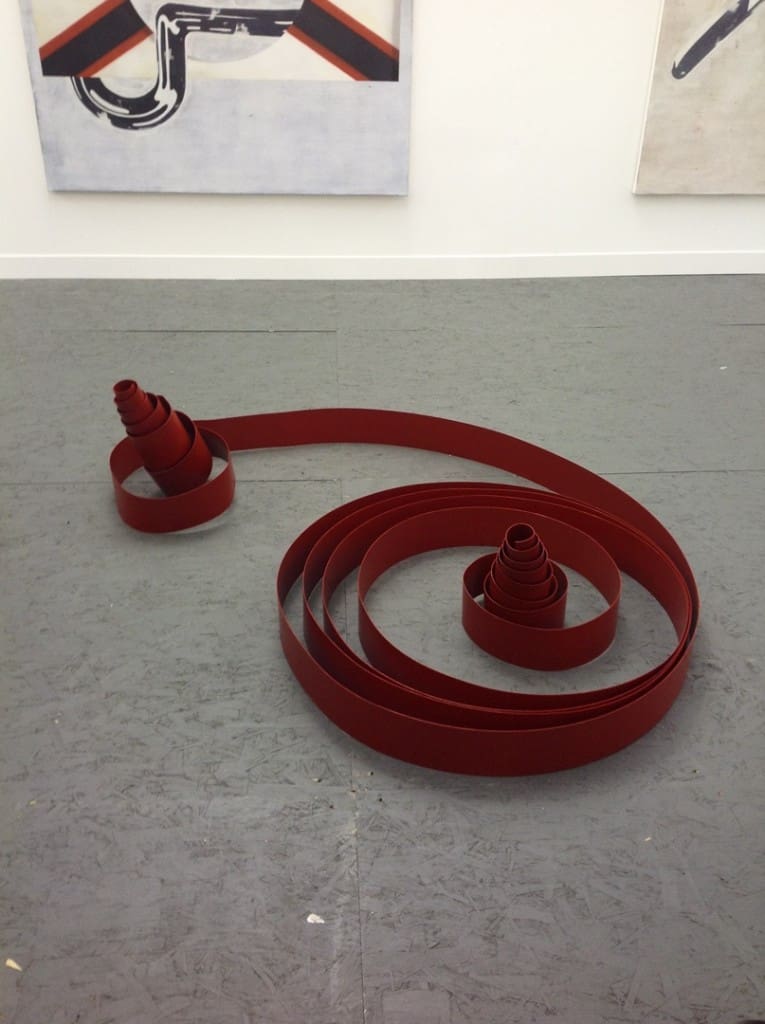
Marzena Nowak, “Red Ribbon”, 2013, acrylic on iron, Galerija Gregor Podnar, Stand F11, photo Contemporary Lynx
The beautiful and impressive bulky size installation by Monika Sosnowska definitely deserved our attention at the booth of The Modern Institute. Black, metallic object resembling a platform with railings (lacking stairs) gained the abstract character by reduction and deformation. Also Galería Juana de Aizpuru traditionally showed the works by Mirosław Bałka. This time there were two objects: “66x113x65” from 2008 and “170x55x40” from 2011.
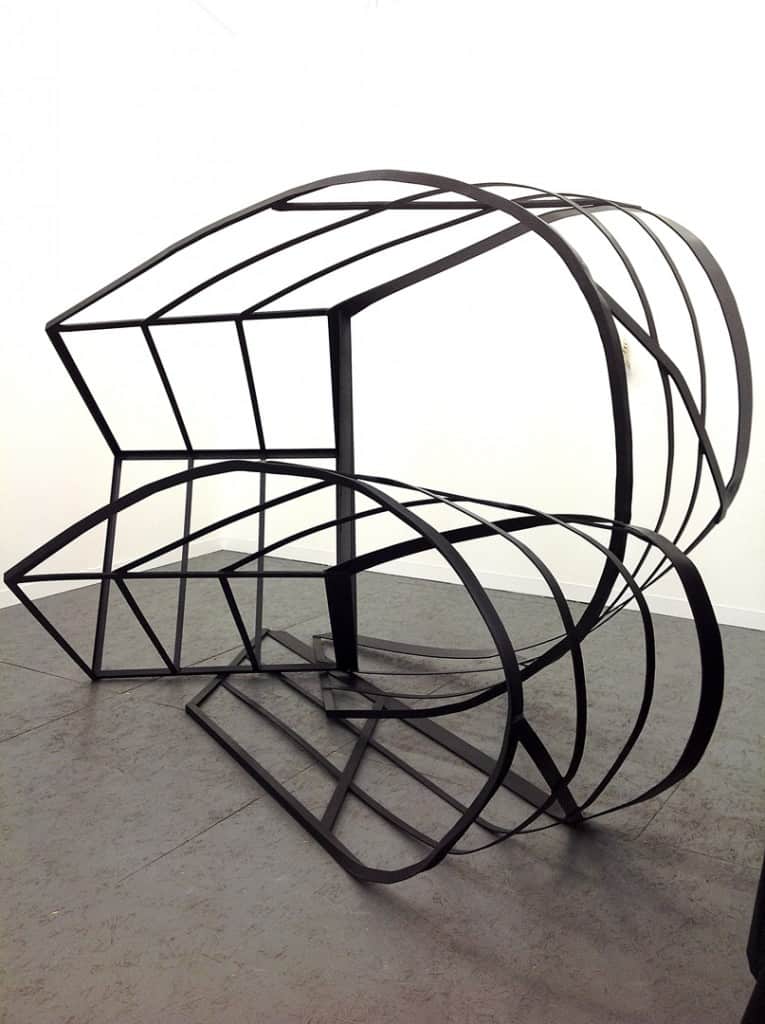
Monika Sosnowska, “Ramp” 2012, painted steel, 210 x 380 x 210 cm, The Modern Institute, Stand C9 , photo Contemporary Lynx
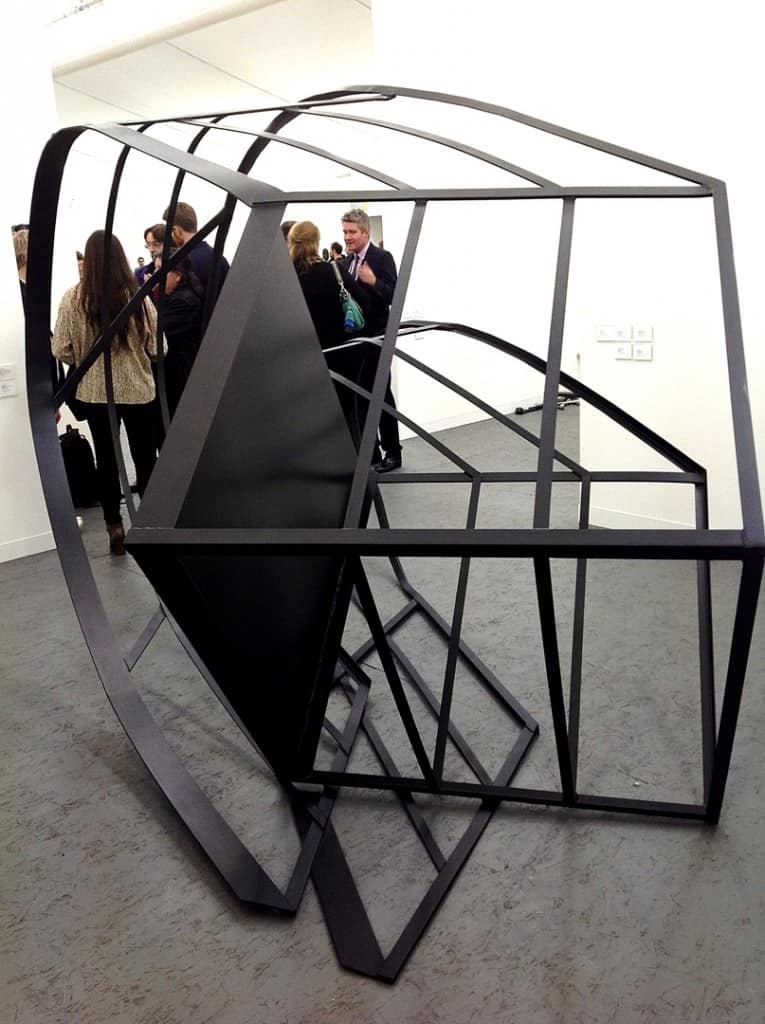
Monika Sosnowska, “Ramp” 2012, painted steel, 210 x 380 x 210 cm, The Modern Institute, Stand C9 , photo Contemporary Lynx
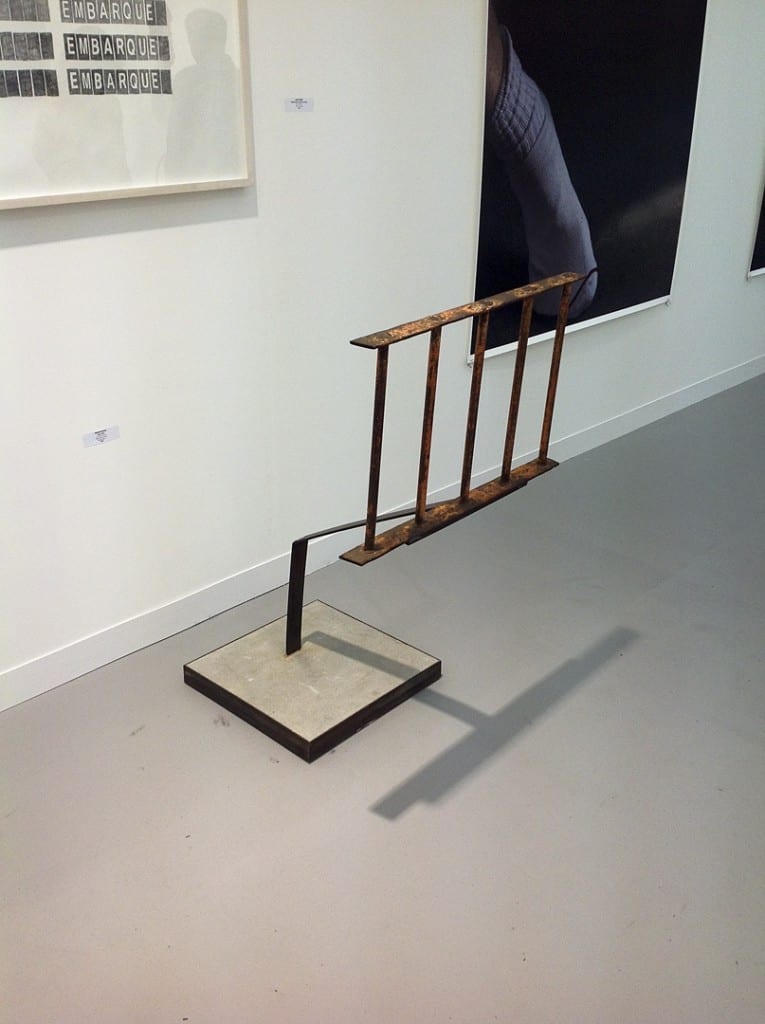
Mirosław Bałka, “66x113x65”, 2008, 113 x 66 x 65 cm, metal concrete, Galería Juana de Aizpuru, Stand G6, photo Contemporary Lynx

Mirosław Bałka, “170x55x40”, 2011, 170 x 55 x 40 cm, steel and 450 gr. of golden rock, Galería Juana de Aizpuru, photo Contemporary Lynx
The Frieze Masters placed on the opposite side of Regent’s Park presented the works from antiquity till modern times. Although there were no Polish exhibitors, we could come across the pearls visiting to the stands of the best international galleries. A beautiful watercolor by Alina Szapocznikow from the years 1971-1972, originating from the series “Human Landscape”, was offered by the New York gallery Peter Freeman Inc. at $ 85 000. Nearby, at the Dominique Lévy Gallery booth we could find a painting by Roman Opałka from the counted series “Detail 3462537-3479346” valued at $ 900 000. Galerie Sanct Lucas presented a picture of the artist from a slightly older generation – Mojżesz (Moise) Kisling, a representative of the École de Paris. A painting of Julian Stanczak – a pioneer of op-art, was shown at Gallery Mitchell-Innes & Nash. The German gallery Berinson showed the photographs of Jósef Głogowski and the work of Wacław Karol Szpakowski.

Alina Szapocznikow, Untitled from the series “Human Landscape” (“Pejzaż ludzki”), 1971-1972, watercolor and fetl-tip pen on paper 64.8 x 49.6 cm, Peter Freeman Inc., Stand A8, photo Contemporary Lynx
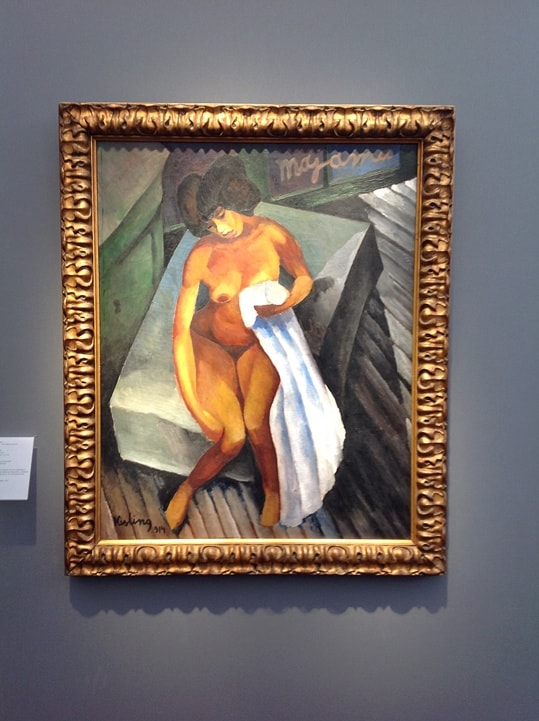
Moise Kisling, “Majama”, 1914, canvas, 92 x 73 cm, Galerie Sanct Lucas, Stand D10, photo Contemporary Lynx

Julian Stanczak, “Intercepting”, 1983, acrylic on canvas, 152.4 x 152.4 cm, Mitchell-Innes & Nash, Stand D3, photo Contemporary Lynx
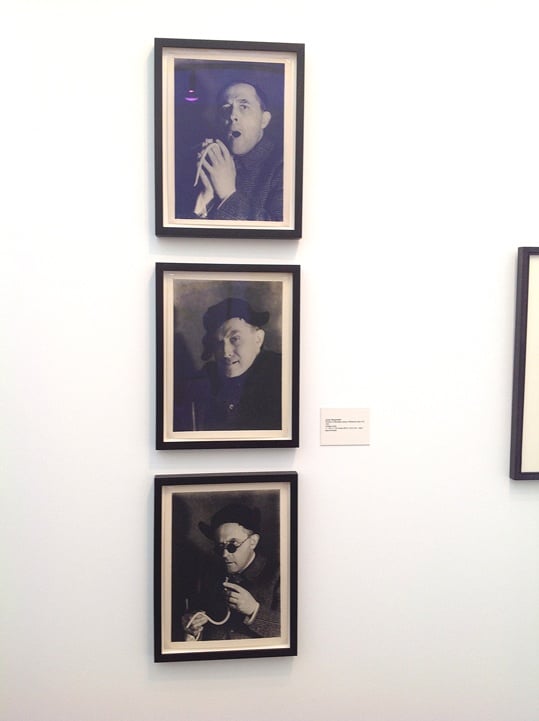
Józef Głogowski, “Portrait of Stanisław Ignacy Witrkiewicz” (set of 3), 1931, vintage prints, 28.5 x 20.3 cm each, Galerie Berinson, Stand G5, photo Contemporary Lynx
However the biggest surprise was created by Jerzy “Jurry” Zieliński, whose painting “Lurking kiss” (”Czyhanie pocałunku”) from 1969 was exhibited by a great London-based gallery Luxembourg & Dayan at $ 75 000. As we found out, this work was sold on the first day of the fair. Moreover, the first British exhibition of Jurry was opened in that gallery during the Frieze. It presents the works from both the private and public collections. This Jerry’s exhibition was a great success not only on the exhibition ground, but also from the commercial point of view. However, we will inform more about this event in the next article, which you can find on our website soon.










